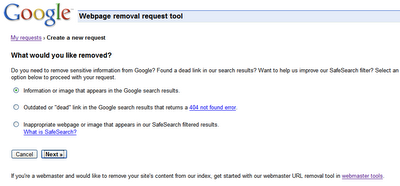If you can't access the administration page
- Profile Manager Enterprise App Doesn't Get To Mac Free
- Profile Manager Enterprise App Doesn't Get To Mac Windows 10
- Profile Manager Enterprise App Doesn't Get To Mac Computer
- Profile Manager Enterprise App Doesn't Get To Mac Pro
- Profile Manager Enterprise App Doesn't Get To Mac Free
- Profile Manager Enterprise App Doesn't Get To Mac And Cheese
Profile Manager's basic set-up is in Server app. You must use Safari to access Profile Manager's /mydevices web page and the administration web page.
Systems Manager checks the device throughout the day, and the profile will only apply if the criteria is met. For enterprise, it is also important to consider Data Leakage Protection (DLP). Using Systems Manager, the administrator can restrict mail to only the built-in mail application, preventing untrusted third-party apps from being used,. May 11, 2017 Method B: Export a Profile Manager certificate. Profile Manager is Apple’s reference MDM product (or proof-of-concept, depending on how jaded you are about it). It’s bundled with macOS Server.app for US$20 and requires macOS (or a VM running it). It has a neat feature where with only an Apple ID it can submit a certificate request to Apple.

Delete app and old profile from device; Resign app. Install re-signed app on device; Go to Settings-General-Profiles (see new provisioning profile) This seems to be a bullet-proof way to confirm the provisioning profile was updated and since the profile only has the 1 signing certificate in it. Then we must be signed with the new cert. Dec 05, 2014 Profile Manager is a service that helps to provide standardization for the computers used in an enterprise. It helps establish a baseline for standardization and also doubles as a MDM suite for.
Only server administrators can access your administration page. The URL format for your administration page is:
- https://your_server's_fully_qualified_domain_name/profilemanager
Example: https://www.example.com/profilemanager
To enrol an iPhone, iPad, iPod touch or a Mac, go to:
- https://your_server's_fully_qualified_domain_name/mydevices
Example: https://www.example.com/mydevices
If you can't access the administration page with a web browser other than Safari, try with Safari. If you can't access it with Safari, try the following troubleshooting steps.
Check your DNS server
DNS settings are important when you're managing a Profile Manager deployment. If Profile Manager doesn't open, make sure that your server points to a reliable DNS server.
If you can't push profiles or apps to clients

If you are experiencing issues when you push profiles or apps to client systems, check the system log file in Console. If it reports that your server can't reach Apple's APNs servers, check your network's configuration. Make sure that all the needed ports are open.
For more information, turn on APNS debug logging with these Terminal commands:
You can find the log file at /Library/Logs/apsd.log.
Profile Manager Enterprise App Doesn't Get To Mac Free
When your APNS transactions have been logged, use these Terminal commands to turn off debug logging:

If you get other issues with Profile Manager
Profile Manager Enterprise App Doesn't Get To Mac Windows 10
Profile Manager logs can help you fix issues with Profile Manager. You can find a symbolic link named 'devicemgr' at /var/log. This file points to /Library/Logs/ProfileManager, where you can find these logs:
| devicemgrd.log |
|
| dm_helper.log |
|
| dmrunnerd.log |
|
| migration_tool.log |
|
php.log |
|
php-fpm.log |
|
php-fpm.devicemgr.log |
|
| PostgreSQL-<yyyy-mm-dd>.log |
|
| profilemanager.log |
|
| servermgr_devicemgr.log |
|
These logs can also provide helpful information:
- /var/log/apache2/service_proxy_error.log
- /var/log/system.log
In macOS Sierra and later, some information is stored via Unified logging. The following terminal command can provide you with some additional helpful information:
Profile Manager Enterprise App Doesn't Get To Mac Computer
About transaction 'failures'
Some of these logs might list transaction 'failures' or retries. Most of these entries are expected and don't indicate an issue. These logged events are conflicts between attempts to modify the underlying PostgreSQL database at the same time. These kinds of failures are retried until they succeed.
You can identify transaction conflicts when you see any of these notes in your log files:
- Cancelled on conflict out to pivot
- could not serialise access due to concurrent update
- @@@ Retry #X
- @@@ Retry X
Use verbose logging to find more info
More information on how to fix an issue is sometimes available if you increase the log level. To gather the information you need, reproduce the issue after you increase the logging level.
Profile Manager Enterprise App Doesn't Get To Mac Pro
When you've finished, revert to the original logging level. If you leave the logging level at a higher setting, it decreases the available space on your start-up drive.
Turn on verbose logging
To increase the level of logging, use this Terminal command:
This automatically restarts Profile Manager Service.
Profile Manager Enterprise App Doesn't Get To Mac Free
Turn off verbose logging
To revert the logging level back to its original setting, use this Terminal command:
This automatically restarts Profile Manager Service.
Profile Manager Enterprise App Doesn't Get To Mac And Cheese
Learn more
- See the ports used by Profile Manager.
- Get Profile Manager Help
- Learn what to do if you can't use the Apple Push Notification service